The Samsung QN95D immediately made a great impression on us. Right from the start, we felt that the Tizen system is intuitive and quick. The fast access to streaming applications such as PrimeVideo, Netflix, and MAX, as well as the ability to integrate with the SmartThings ecosystem, makes using the television simply convenient. The solar remote is a clever solution – eco-friendly and practical, as it allows control of other devices, such as a decoder (e.g. Canal+) or soundbar. While watching films and series, we quickly noticed how much of a difference the MiniLED technology makes. Thanks to the precisely functioning backlight zones, the picture gained incredible depth - which was confirmed by our contrast tests. The blacks are truly deep, and bright scenes using HDR stand out with excellent detail despite the lack of Dolby Vision. Additionally, the high brightness combined with the anti-reflective coating allows for comfortable viewing even in a sunlit room. When we played on this television, we immediately appreciated the low input lag and the fluidity of the image. The 144 Hz panel and support for HDMI 2.1 guaranteed dynamic and responsive gameplay, regardless of the game. All these features made every gaming session pure pleasure, especially in dynamic titles where precision and lack of delays matter. In terms of design - which is worth mentioning for this television - the QN95D simply looks great. The slim housing, solid central stand, and Ambient Mode function, which allows the screen to blend into the room's decor, give it an elegant touch. The included camera is an interesting addition that can be useful during video calls or when using interactive applications – like personal training through the Daily+ tab. However, for such, let’s be honest, an expensive piece of equipment, there are a few downsides. The lack of a recording function and support for sound in DTS:X format may be a problem for users seeking this feature. Nevertheless, the Samsung QN95D is a television that combines exceptional picture quality, functionality, and elegant design. The MiniLED backlighting makes a real difference here, especially if we care about deep blacks, high contrast, and excellent brightness. This is a device that will perform well during movie screenings, dynamic gaming, and everyday television watching.
- Matching (Score)
- Our verdict
- TV appearance
- Where to buy
- Contrast and black detail
- HDR effect quality
- Factory color reproduction
- Color reproduction after calibration
- Smoothness of tonal transitions
- Image scaling and smoothness of tonal transitions
- Blur and motion smoothness
- Console compatibility and gaming features
- Input lag
- Compatibility with PC
- Viewing angles
- Daytime performance
- Panel details
- TV features
- Apps
- Playing files from USB
- Sound
Samsung Neo QLED QN95D vs Hisense A7NQ
Direct comparison
Neo QLED / QN95


Panel type: LCD VA (wide viewing angle)
Resolution: 3840x2160
System: Tizen
Model year: 2024
Complete the survey to find out the result

Panel type: LCD VA
Resolution: 3840x2160
System: VIDAA
Model year: 2024
Complete the survey to find out the result

Overall rating
7.8
6.2
Movies and series in UHD quality
8.0
6.4
Classic TV, YouTube
8.1
6.2
Sports broadcasts (TV and apps)
7.7
4.9
Gaming on console
9.2
7.0
TV as a computer monitor
8.6
5.8
Watching in bright light
6.5
4.9
Utility functions
6.7
8.7
Apps
9.1
7.7
Sound quality
7.0
5.9
Complete the survey to find out what fits your preferences
Advantages
Excellent brightness - great for HDR content
Very good contrast
Wonderful choice for gamers (HDMI 2.1 4K@144Hz, low input lag)
Wide viewing angles - unusual for this type of panel
Modern design
Camera included
Good native contrast
Very low input lag, even in Dolby Vision
ALLM, VRR, Game Bar and 120 Hz (Full HD) – useful features for gamers
USB recording from built-in tuners
Simplicity and speed of the Vidaa system
Support for AirPlay and Miracast
Support for Dolby Atmos and DTS:X spatial audio
Disadvantages
No recording support
No DTS format support - may pose a problem for Blu-ray users
Average performance in HDR content
Considerable ghosting
No support for subtitles from USB (at the time of writing the test)
No support for HGiG
Our verdict
The Hisense A7NQ is one of the simplest QLED televisions available on the market, primarily appealing with a very attractive price. Equipped with a VA panel, it offers solid native contrast, and the additional PFS coating (another type of QLED) allows for vibrant colours, especially in older SDR content. This is a television that will work well for those who use a TV more occasionally but are looking for a device with useful extras. The Vidaa system, which has gradually established its position in the Polish market, is another plus. It supports most popular streaming applications available in Poland and offers features such as USB recording, which can be rare in this class of equipment. It is evident that the manufacturer listens to user feedback and strives to implement improvements, which is a nice touch. When it comes to picture quality, it is… simply average. Brightness is limited, so the television will not be the best choice for watching 4K HDR content. However, it performs better with older materials or regular television, where high brightness is not crucial, and colours can look really good, especially after professional calibration. Is it a good screen for gamers? The A7NQ is not a gaming monster – the 60 Hz panel and significant motion blur may deter more demanding users. Nevertheless, the manufacturer has included a few features for gamers, such as VRR, ALLM, or even displaying 120 Hz in a lower resolution. Additionally, there is an intuitive and user-friendly Game Bar that makes it easier to adjust settings while gaming. Despite this, the television is not without its drawbacks. One of the stranger problems we encountered was the complete disregard for Polish subtitles from USB. We hope this is a matter of an update, but at present, it is hard not to notice. In short, the Hisense A7NQ is a solid mid-range option. While it may not be equipment that wins all tests or aspires to the title of "television Formula 1", it will certainly satisfy many people – especially those looking for something simple and affordable. It is a good choice for someone who wants to enjoy content on a large screen without spending a fortune.
TV appearance







Contrast and black detail
8.3/10
6.3/10
Local dimming function: Yes, number of zones: 1344 (24 x 56)
Local dimming function: No
Contrast:
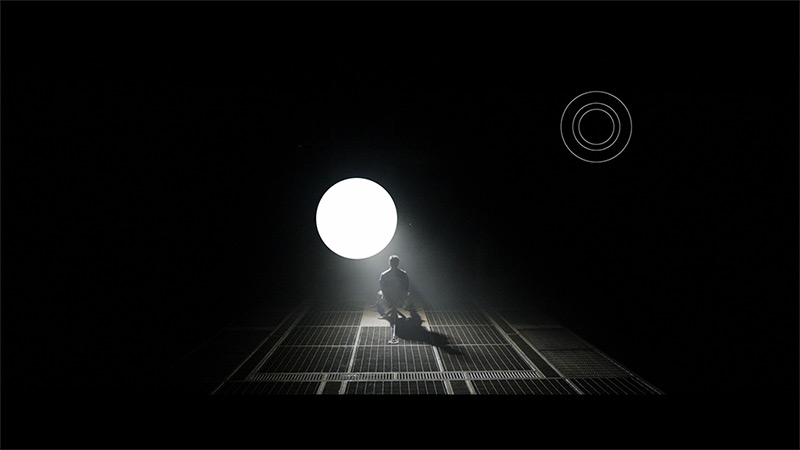
Result
∞:1
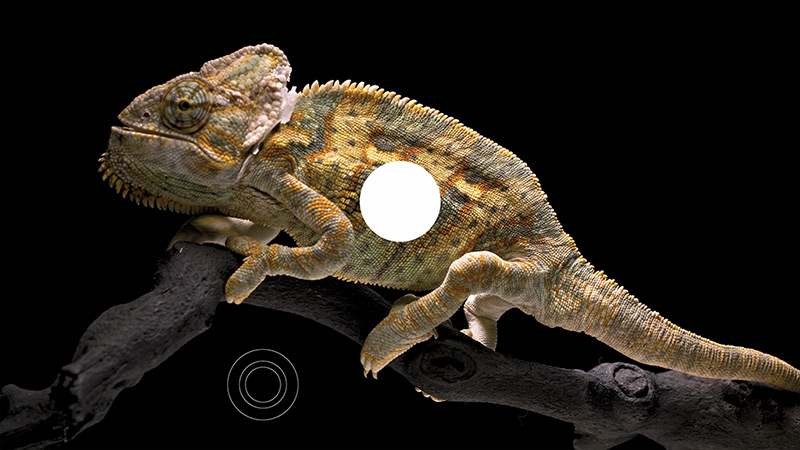
Result
218,000:1
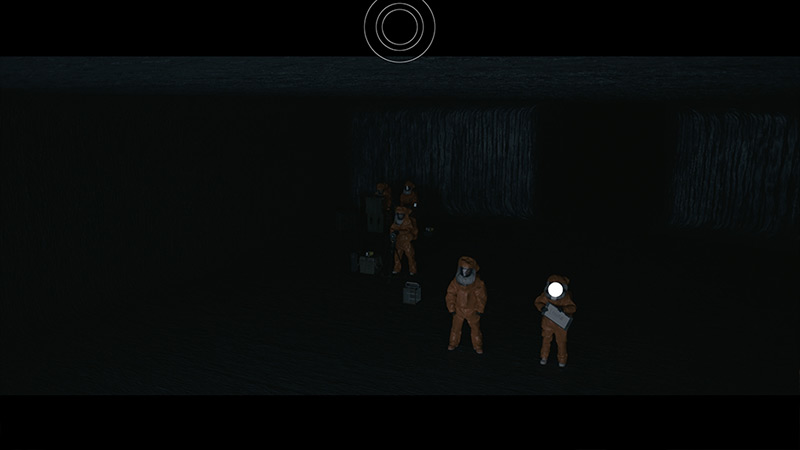
Result
61,000:1

Result
10,500:1
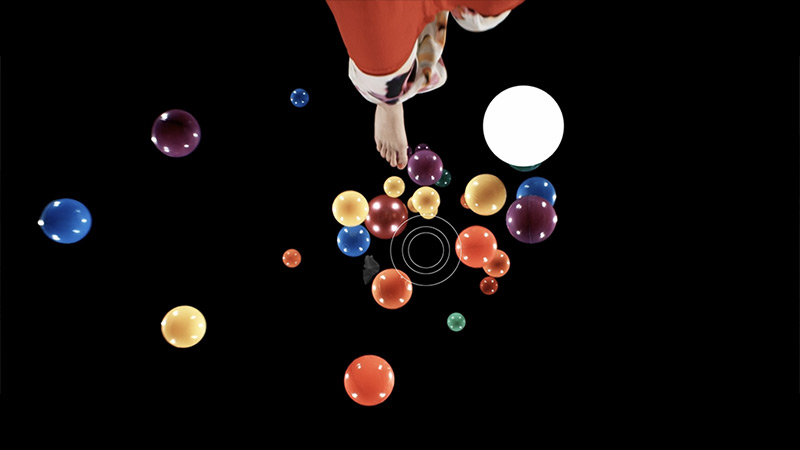
Result
4,900:1

Result
8,300:1

Result
7,200:1

Result
6,200:1

Result
6,500:1

Result
6,200:1
Halo effect and black detail visibility:



Samsung QN95D is a television that certainly attracts attention thanks to the use of a VA panel and innovative Mini LED backlighting. This model stands out with an impressive number of 1344 local dimming zones, achieving an exceptional level of contrast and black depth. It is worth noting that the number of backlighting zones may vary depending on the screen size – in larger models, these zones naturally increase, allowing for even better performance in terms of contrast and black levels. Mini LED, with smaller diodes, enables more precise control of backlighting, significantly enhancing the quality of the displayed image. The tested 55-inch model handles detail reproduction excellently, and its ability to adjust brightness in different parts of the screen results in a phenomenal visual effect. During our tests, Samsung QN95D on the test pattern from the film "Oblivion" surprised us with results that could compete with OLED televisions, offering nearly reference-level contrast. However, how does the television perform in more challenging conditions? In more demanding scenes, the local dimming algorithm may show some flaws. In some cases, on dark backgrounds, smaller bright elements may lose a lot of brightness, which we noticed during tests with the Pioneer Kuro test disc. Additionally, when we take a closer look (e.g. a scene from the film Sicario 2), some imperfections can be observed. The television sometimes struggles with brightness optimisation – in some scenes, it dims elements too much, while in others, it brightens the screen too intensely. These phenomena can be noticeable enough to capture the viewer's attention, especially in demanding night scenes. However, if we do not pay much attention to the mentioned imperfections, Samsung QN95D proves to be one of the best choices in terms of black depth among displays with MiniLED technology.
The Hisense A7NQ uses a VA panel, which by definition offers better contrast than IPS, and indeed – it performs quite well here. With a contrast ratio of around 6500:1, the image has a perceptible depth, and scenes like the one from Oblivion can look really good. We see decent separation of lights from the darker areas of the image. However, there is one "but" – the lack of local dimming. In this price range, it's of course normal, but unfortunately, it affects the quality of blacks. In some scenes, the blacks take on blueish hues instead of that truly deep, inky black. It’s not anything dramatic, but if we watch films in a dark room, the differences can be more noticeable. In short, the contrast is good for a VA panel – it's solid. For the average user, this will be more than sufficient, especially in well-lit rooms. There are no fireworks here, but it's a fair result for this class of equipment.
HDR effect quality
6.7/10
5/10
Luminance measurements in HDR:

Result
1798 nit

Result
542 nit
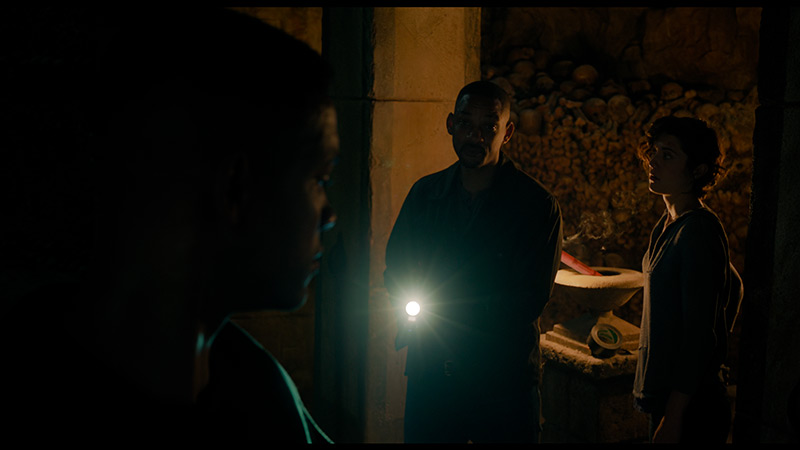
Result
805 nit

Result
269 nit

Result
1528 nit

Result
295 nit

Result
348 nit

Result
379 nit

Result
315 nit

Result
348 nit
Scene from the movie “Pan” (about 2800 nits)


Scene from the movie “Billy Lynn” (about 1100 nits)


Static HDR10


Dynamic: HDR10+
Dynamic: Dolby Vision


HDR luminance chart:
Hisense A7NQ
HDR luminance
Samsung Neo QLED QN95D
HDR luminance
Samsung QN95D handles HDR exceptionally well, achieving a peak brightness of around 2000 nits. In the tested movie scenes, where the screen is fully lit, the television provides intense and realistic representation of HDR content, significantly enhancing the visual experience. Nevertheless, similar to contrast, the dimming algorithm may sometimes show limitations. Despite the considerable number of Mini LED zones, the television does not surprise the user with incredible brightness. For instance, in scenes from the film "Life of Pi," where a bright moon appears against a dark background, and in excerpts from "Sicario 2," where a strong light effect occurs on a dark background, the television displays very poor results. At such moments, the television attempts to reduce the halo effect by darkening the image to a level reminiscent of SDR quality. As a result, blacks appear deep and uniform, but this comes at the cost of losing some detail in bright areas. It is a compromise aimed at maintaining the best possible quality of black, although it simultaneously causes the image to lose a bit of its dynamism. Despite certain flaws in the operation of the local dimming algorithm, this television deserves praise for its wide coverage of the DCI-P3 colour gamut. This is made possible by the use of a quantum dot coating, also known as QLED technology, which allows for vibrant and rich colours.
We checked how the Hisense A7NQ performs with HDR, and there are no surprises here. The luminance graph showed a maximum brightness level of 370 nits. The result? Exactly what one could expect – average. At around 350 nits, HDR does not particularly stand out compared to SDR. Indeed, there is a subtle difference in more brightly lit scenes, but it is not an effect that leaves you stunned. As for the coverage of the wide colour gamut, the result was 92% for DCI-P3 and 70.2% for BT.2020. These are decent values for a TV in this class, which uses a PFS coating – the same one that is sometimes promoted as QLED. Colours look good, but we shouldn’t expect something that competes with the best screens on the market. HDR on the Hisense A7NQ is more of an addition than a "game changer." For those looking for solid image quality on a moderate budget – quite acceptable. However, if we expect full HDR capabilities, it is worth looking at models from the higher price range.
Factory color reproduction
5.9/10
6.1/10


Factory Mode
After calibration


Factory Mode
After calibration
In the category of factory colour reproduction, the television Samsung QN95D was tested in Filmmaker mode, which offers the best settings from the manufacturer. Nevertheless, it is not entirely free from flaws. In the case of HD content, there is a noticeable colour deviation, particularly in white balance, where the red colour clearly dominates the graph. The situation improves with 4K HDR content; however, there are still significant drops in blue colour reproduction. These effects can be observed in a scene from the film "Star Wars," where the protagonist is depicted in overly warm tones.
As for contrast, we can observe an initial large jump on the gamma graph, indicating that the television effectively highlights the brighter parts of the image. However, at the end of the graph, we notice a distinct drop, which may mean that in darker tones, details can be lost. Such a shape of the gamma curve can affect the way users perceive dark scenes, where some details may become too blurred or too dark, causing the image to lose clarity. It is also worth noting the curve responsible for brightness (EOTF), which is quite correct, except for the initial drop.
Although Samsung QN95D boasts impressive parameters and advanced technologies to deserve the title of one of the best televisions on the market, it requires certain adjustments in colour reproduction and contrast to fully utilise its potential.
When testing the Hisense A7NQ in Filmmaker mode, we were hoping for compliance with the manufacturer's assumptions, but unfortunately, reality looks different. The main issue, as with most televisions, is white balance. In the case of the A7NQ, we noticed a clear dominance of blue, which affected both lower quality materials and 4K HDR content. The results of the Color Checker tests confirm this, and the comparative images speak for themselves – the leading actress in "factory" mode appears cool and pale. It looks as if she has been drained of life.
As for brightness characteristics, both gamma and the EOTF curve show that the image is excessively bright. As a result, everything appears flat, lacking depth and contrast. This state of affairs definitely does not work in favour of the A7NQ and makes the viewing experience in factory mode leave much to be desired. If we expect natural colour reproduction and appropriate image depth, the A7NQ in Filmmaker mode is unlikely to impress us. It is a television that requires considerable adjustment to bring out its potential.
Color reproduction after calibration
8.9/10
7.6/10




After calibration, the picture on the Samsung QN95D television achieves truly impressive results. The white balance is perfectly aligned, and error readings rarely exceed 2, which means that colours are displayed very accurately. Most samples from the Color Checker test fall within an acceptable error range, confirming that the television reproduces hues excellently. The contrast has also improved significantly, and the gamma curve is more stable, resulting in better visibility of details in both dark and bright scenes. However, it is worth noting the EOTF (Electro-Optical Transfer Function) curve, which shows some discrepancies in film tests. Although the television performs well in most scenes, details in the blacks can still be lost in more extreme cases – this is due to an aggressive dimming algorithm.
Nevertheless, these minor imperfections do not detract from the overall picture quality. After calibration, the Samsung QN95D impresses with its visual quality, offering an exceptional experience that will certainly satisfy anyone looking for a top-tier television.
Hisense A7NQ offers several tools that allow for improved image quality, so we decided to take matters into our own hands and "dig around" in the settings a bit. Thanks to professional tools and measurements, we managed to correct the white balance, eliminating the excessive dominance of blue colour in both HD and 4K materials. This is a significant step forward, as in the Color Checker test, the colour reproduction errors in lower quality content dropped to a much more acceptable level. Unfortunately, the 4K materials still fall short of perfection – the colour inaccuracies are considerable and stem from the limitations of the television.
As for the gamma, we managed to set it at the correct level, which significantly reduced the excessive brightening of the image. However, the issue with brightness characteristics in 4K content remains unresolved – the EOTF curve still shows excessive brightness across the entire screen. It’s possible that correct implementation of dynamic tone mapping could help here, but as we mentioned earlier, this feature in the Hisense A7NQ works rather poorly, rather than being helpful. Nevertheless, the calibration has significantly improved the overall image reception. The director's vision is now much better represented than in the factory settings, which will certainly be appreciated by more demanding viewers.
Smoothness of tonal transitions
9.1/10
9/10












The fluidity of tonal transitions is one of the strongest points of the Samsung QN95D television, which received a very high rating in this category. Such results are rarely seen in televisions that offer such high brightness. Thanks to the precise operation of the panel, tonal transitions are exceptionally smooth and natural. The only noticeable shortcomings might be slight errors around the blacks, but they are subtle enough that most users are unlikely to notice them. This makes the Samsung QN95D an excellent choice for those who value image quality and detail, especially in scenes with complex lighting.
This is one of the greatest advantages of this television. The Hisense A7NQ performs exceptionally well with the fluidity of tonal transitions, even in the most demanding scenes. The colour blends are practically invisible, resulting in very smooth gradations and a naturally looking image. Of course, if we are purists and scrutinise the screen with a "hawk's eye," we may notice slight joins, particularly in the darker areas of the image. However, these are subtle imperfections to such an extent that most users will not even notice them.
Image scaling and smoothness of tonal transitions
7.2/10
5.5/10
Smooth transition function


Image without overscan on the SD signal


The Samsung QN95D television handles tonal transitions even in lower quality materials, thanks to the noise reduction feature employed, which functions like a gentle gradation. This feature is extremely effective, smoothing out the image and eliminating unwanted noise while significantly improving the quality of the displayed material. However, as is often the case, too much effectiveness can lead to unintended side effects. In some materials, this feature may also blur elements that should remain sharp, such as film grain.
Despite this, the television performs well in the context of image scaling, eliminating larger jagged edges. In a scene where branches are visible, they are not excessively artificially sharpened, allowing for a natural appearance, and the model does not have an artificial outline. Overall, this means that even in more challenging conditions, the film material presents itself satisfactorily on the Samsung QN95D. The only downside when watching HD/SD content (such as regular terrestrial television) is the fact that we have a slightly cropped image – this is caused by the so-called overscan, which cannot be turned off.
The Hisense A7NQ impresses with the smoothness of tonal transitions in 4K content, but unfortunately, there is no feature here to improve this aspect in older materials of lower quality. In such cases, colour transitions become more visible, which can slightly detract from the overall image, especially in scenes with a lot of gradients.
When it comes to upscaling, the television performs surprisingly well. The image is noticeably improved, although there are some compromises. It can be seen that the television adds a bit of artificial sharpness, and background elements, such as branches, display slight "jaggies." However, these are details that will primarily catch the eye of those who pay attention to such nuances.
Blur and motion smoothness
7.5/10
3.8/10


Blur (native resolution, maximum refresh rate):






Blur (BFI function enabled):
Image flickers in this mode



The panel in Samsung QN95 performs very well in terms of motion blur and smoothness of movement. With a refresh rate of 120 Hz and features for reducing blur and judder, the picture settings can be customised to personal preferences, whether for watching films or for dynamic sports broadcasts. The user has the option to adjust the smoothness of the image on a 10-point scale – from a more frame-like appearance reminiscent of traditional film to a smooth, almost theatrical effect, which works particularly well for sports transmissions.
The Hisense A7NQ is equipped with a 60 Hz panel, which means that dynamic scenes – for example in sports or games – perform rather averagely here. This is standard for this class of equipment, but it must be acknowledged that watching more intense, fast-moving content can leave a lot to be desired. However, when it comes to films, the television offers a motion smoothing feature that operates on a 10-point scale. The "judder reduction" option allows you to tailor the smoothness of the image to your own preferences. At the lowest setting, we get a natural film frame rate, which will please cinema purists. Meanwhile, the maximum setting provides a very smooth, theatrical image that may appeal to those who prefer a more "smoothed" motion.
Console compatibility and gaming features
9.5/10
6.3/10
- ALLM
- VRR
- VRR range48 - 144Hz48 - 60Hz
- Dolby Vision Game Mode
- Correct implementation of HGIG
- 1080p@120Hz
- 1440p@120Hz
- 4K@120Hz
- Game bar








Samsung QN95D offers quite a few features that gamers will appreciate. First and foremost, the television supports variable refresh rate (VRR), which allows for smoother gameplay, eliminating issues with tearing, especially during dynamic scenes. We also find the auto low latency mode (ALLM) feature, which automatically switches the television to low latency mode when it detects a connected console or computer, ensuring more responsive controls.
Furthermore, the QN95D Samsung has a game mode that reduces input lag to a very low level, which is crucial in games where reflexes play an important role. With a high refresh rate of 120 Hz, the picture is exceptionally smooth, significantly enhancing the experience of fast-paced action games and sports productions. The television also supports G-Sync and FreeSync technologies, which further enhance gameplay smoothness and improve user comfort. An interesting addition is the 'Game Bar' – a special menu that provides quick access to all game-related settings, allowing easy adjustments of picture and parameters to suit user preferences without the need to interrupt gameplay.
Although the Samsung QN95D does not support Dolby Vision – which is quite obvious for Samsung televisions – it does offer the HGiG feature, which ensures appropriate picture quality in HDR games, in line with the creators' vision.
Hisense A7NQ is a piece of equipment that can pleasantly surprise gamers, although it is not without its flaws. The fact that we have a 60 Hz panel here immediately suggests that the television is not designed for the most demanding gaming scenarios. The motion blur that we described earlier can also be an obstacle, especially in dynamic games.
However, there are a few things that are worth praising. The television supports ALLM (automatic game mode) and VRR (variable refresh rate), which is not always standard in this price range. The biggest surprise, however, is that the A7NQ can display images at 120 Hz – albeit only in Full HD resolution, but nevertheless, it's a significant nod to gamers. This provides the option to choose between smoothness and resolution, which is not obvious in televisions at this price.
A nice addition is the Game Bar, which is clear and practical – all the most important functions are at hand, without digging through the settings. However, it lacks support for HGiG, which may be a disappointment for gamers looking for perfect HDR in games.
Input lag
9.8/10
9.9/10
SDR
HDR
Dolby Vision
QN95D Samsung stands out with excellent input lag performance, achieving values below 15 ms. This is an impressive result that is not dependent on resolution or refresh rate. With such low latency, gamers can enjoy the TV's instant response to their commands, which is crucial in dynamic games. Whether we are playing 4K titles at 120 Hz or lower resolution games, the QN95D ensures exceptional gameplay smoothness and precise motion rendering. Such a level of responsiveness makes the TV an ideal choice for any avid gamer.
The Hisense A7NQ definitely has something to boast about when it comes to input lag. It is really very low, which is immediately noticeable while gaming – both in standard game mode and with Dolby Vision enabled. Regardless of the settings, the response is instantaneous, making controls in games smooth and responsive. This is definitely a plus for any gamer who doesn't want to worry about delays. Even more dynamic gameplay on this television won't be a problem. In this category, the Hisense A7NQ truly stands out from the competition.
Compatibility with PC
8.6/10
5.8/10


In the category of collaboration with a PC, the Samsung QN95D television stands out with its high performance, offering support for 4:4:4 chroma and impressively low input lag. Thanks to these features, users can enjoy fluidity and responsiveness, making it an ideal choice for office work or everyday applications. However, one noticeable issue is the poor visibility of horizontal lines on a dark background. In the test image on the right, it is evident that the letters resemble vertical lines, which can be somewhat frustrating. Nonetheless, the television generally offers good compatibility with a computer, and users can expect comfortable operation in their daily tasks.
The Hisense A7NQ performs well if we want to use it as a work monitor. Thanks to 4:4:4 chroma support, the fonts are clear and readable, regardless of the background. This is a significant advantage, as working with documents or browsing websites on this television is quite enjoyable. When it comes to gaming on PC, the situation is less optimistic. The 60 Hz panel unfortunately doesn't allow for a smoother experience, which may disappoint gamers looking for something more. Even the presence of G-SYNC and low input lag does not change the fact that dynamic titles may look average.
Viewing angles
7.1/10
3/10
In the case of TVs with VA panels, one can usually expect limited viewing angles; however, QN95D Samsung surprises in this category. Thanks to the applied coating that widens viewing angles, the TV offers really good performance, which is rarely seen in devices with this type of panel. Although VA panels are usually not the best in this regard, in this model, the picture remains clear and vivid even when viewed from the side, making it an excellent choice for larger rooms and group watching.
The Hisense A7NQ does not surprise in this category. The viewing angles are typical for a VA panel – which means that if we sit directly in front, everything looks fine, but if we shift slightly to the side, the image begins to lose quality. Colours become less saturated, and black starts to turn to shades of grey. This is standard for VA panels, and it is rather difficult to expect anything different. Therefore, if we plan to watch television with a larger group of people, it is worth considering positioning the television so that everyone has a chance to sit as close to the centre of the screen as possible.
Daytime performance
6.5/10
4.9/10




Panel brightness
Average luminance SDR
Hisense A7NQ: 371 cd/m2
Samsung Neo QLED QN95D: 655 cd/m2
In the daytime performance category, QN95D Samsung, despite using a glossy panel, may struggle with highly visible reflections on the screen. As seen in the photo on the right, the lamp disperses to the left and right, which is a result of the anti-reflective coating used. However, overall this coating performs very well when the television displays any colours other than black, where reflections become more noticeable. It is worth noting that the television achieves very high brightness for SDR content, exceeding 650 nits, which provides comfortable viewing even in bright rooms.
The Hisense A7NQ does not make the best impression in brightly lit rooms. The panel performs averagely at reducing reflections, so if there is a lot of light coming in through the windows, the screen can turn into a mirror. Additionally, the brightness level of 370 cd/m² is only suitable for moderately sunny rooms. In more demanding conditions, where the sun lights up the screen, the image begins to lose visibility and it becomes difficult to see all the details. If we plan to use the television mainly during the day in a brightly lit room, it is worth considering this, as in such conditions the A7NQ may not be the best choice.
Panel details
Subpixel Structure:


Panel uniformity and thermal imaging:


TV features
6.7/10
8.7/10
- HDMI inputs0 x HDMI 2.0, 4 x HDMI 2.1 48Gbps3 x HDMI 2.0, 0 x HDMI 2.1
- Other inputsRCA (Chinch)
- OutputsToslink (Optical audio), eARC (HDMI), ARC (HDMI)Toslink (Optical audio), eARC (HDMI), ARC (HDMI), Mini-Jack (Headphones)
- Network InterfacesWi-Fi 2.4GHz, Wi-Fi 5GHz, Ethernet (LAN) 100MbpsWi-Fi 2.4GHz, Wi-Fi 5GHz, Ethernet (LAN) 100Mbps
- TV receptionDVB-T, DVB-T2, DVB-S, DVB-S2, DVB-CDVB-T, DVB-T2, DVB-S, DVB-S2, DVB-C
Classic features:
- Recording to USB (terrestrial TV)
- Recording programming
- Picture in Picture (PiP)
- RF remote control (no need to aim at the screen)
- Backlit remote control
- Teletext
- Audio only mode
- Bluetooth headphones support
- Simultaneous Bluetooth headphones & TV audio
Smart features:
- AirPlay
- Screen mirroring (Windows Miracast)
- Voice search
- Voice search in native language
- Ability to connect a keyboard and mouse




The Tizen system in Samsung televisions is characterised by simplicity and speed of operation. The central point of the interface is the "Smart Hub," which allows for quick access to the most important applications and recommended content, such as Netflix, YouTube, and Prime Video. Tizen also supports the Multi View function, allowing for simultaneous viewing of several image sources. Integration with AirPlay enables easy content sharing from Apple devices, and there is voice control in Polish. Users can control the television, search for content, and perform other operations using voice commands, which significantly facilitates the daily use of the device. One of the most distinctive elements of Samsung QN95D is the included Slim Fit camera, which offers functionality that goes beyond the standards of other models currently on the market. Thanks to the applied "POGO" connector, the camera can be easily connected directly to the television. It allows for video calls and personal training functions using the camera. This innovative approach opens up new possibilities for users in terms of interaction with the television.
It is also worth mentioning the solar remote control, which is an eco-friendly solution—it does not require battery replacement as it charges using solar energy. This remote is also universal, allowing control of other devices, such as the Canal+ decoder, without the need for additional remotes. This is a significant convenience that enhances user comfort. Features dedicated to users of traditional television include picture-in-picture (PIP), allowing for the simultaneous viewing of two programmes. However, the lack of recording functionality may be a disappointment, as this could be a drawback for some users.
Hisense A7NQ runs on the Vidaa system, which may not be as developed as those from Korean giants, but it does what it needs to. It is clear that Hisense is starting to understand the Polish market – the latest updates have added the most important streaming applications. We can easily find the most popular streaming applications here. Unfortunately, if someone is counting on Tidal or Spotify, they will not find them here – it's a bit of a shame, as it would further complement the system. The Vidaa system itself works surprisingly smoothly. The menu is simple, and voice control in Polish is a nice touch that makes daily use easier. There are no unnecessary complications, everything is at hand, and it works without significant delays.
In terms of features, the television also performs well. Recording to USB works thanks to the built-in tuners, and connecting additional devices via Bluetooth or USB is seamless. AirPlay and Miracast are additional advantages – you can easily stream content from your phone or laptop.
There is, however, a lack of the PiP (picture-in-picture) function, but that is likely something that will only be noticed by those who really need it. Just like recording to USB – it's great that it's available, but not everyone will use it.
Playing files from USB
9.1/10
5.5/10
Supported photo formats:
Maximum photo resolution:


The built-in player in the Samsung QN95D television is undoubtedly one of its stronger points. It handles almost all video and audio file formats that we tested exceptionally well. The exception is the lack of support for Dolby Vision, which aligns with Samsung's policy, and less popular codecs. A significant advantage is the support for Polish characters in subtitles and the ability to customise font colours, which greatly improves the comfort of watching content with subtitles. A downside may be the limited support for photo formats – the television mainly supports JPEG, and there is a lack of support for more advanced formats such as PNG or Apple HEIC.
During tests of the USB file player, we encountered something really strange. Normally, we check whether the television can handle external files with subtitles so that one can comfortably watch foreign productions in Polish. Unfortunately, despite the presence of various subtitle formats on our pendrive, the television did not display any of them. Interestingly, there was an option in the menu to change the font colour, so it seems that the feature should be functioning. We believe this is a matter to be fixed in an update, but for now the situation is simply strange and somewhat concerning. As for other types of files, things are much better. The television handles most popular audio and photo formats, so playing music or browsing holiday photos will not pose a problem.
Apps
9.1/10
7.7/10














































Sound
7/10
5.9/10
- Maximum volume--
- Dolby Digital Plus 7.1
- Dolby True HD 7.1
- Dolby Atmos in Dolby Digital Plus (JOC)
- Dolby Atmos in Dolby True HD
- DTS:X in DTS-HD MA
- DTS-HD Master Audio
The sound in Samsung QN95D is at a very good level thanks to the 4.2.2 system with a power of 70W. It provides clear, crisp audio, and the bass is well-balanced, which works well both for watching films and gaming. The support for Dolby Atmos adds a spatial effect, allowing for a fuller audio experience. However, there is a lack of support for DTS, which is a typical feature for Samsung TVs, but it may be a downside for those attached to that format. Overall, the sound performs very well and should meet the needs of most users.
The Hisense A7NQ performs like most mid-range televisions – it's acceptable but without much excitement. The sound meets its purpose in everyday use, but if we expect strong sensations, it is worth considering adding a soundbar. On the positive side, the television supports practically all popular surround sound formats, including Dolby Atmos and DTS:X. This means that if we have the appropriate external equipment, we can enjoy a more immersive sound experience.
